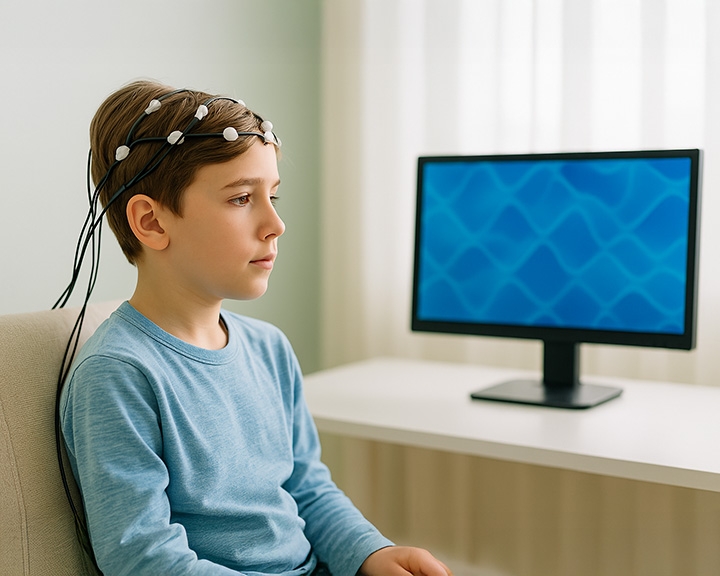
What is Neurofeedback
A Natural, Evidence-Based Treatment for Attention and Behavior Challenges
Neurofeedback is a research-backed, non-medication approach that helps improve attention, focus, and emotional regulation by training your brain. Also known as EEG biofeedback or neurotherapy, it leverages the brain’s own ability to adapt—called neuroplasticity—to reshape unhealthy patterns of brain activity and promote more balanced mental functioning.
For families seeking drug-free ADHD treatment or adults looking for long-term tools to manage symptoms like distractibility, disorganization, or emotional reactivity, neurofeedback offers a safe, effective solution.
How Neurofeedback Works
Your brain learns through feedback—just like when you practice a new sport or musical instrument. Neurofeedback uses this natural learning process to teach your brain to operate in a more optimal state.
Using sensors placed on the scalp, neurofeedback measures your brain’s electrical activity in real-time. These brainwaves are translated into audio or visual feedback—often in the form of video games, music, or movies—that only play when your brain is in a balanced state. If brain activity becomes dysregulated, the feedback changes, guiding your brain to self-correct.
This process helps strengthen healthy brainwave patterns associated with focus, calm, and emotional regulation, while reducing patterns linked to distractibility, anxiety, or impulsivity.
Who Benefits from Neurofeedback?
Neurofeedback is especially helpful for:
- Children and teens with ADHD who struggle with attention, emotional outbursts, or academic performance
- Adults with ADD/ADHD who feel overwhelmed, forgetful, or underperforming in work or relationships
- Anyone seeking natural ADHD treatment or alternatives to medication
Whether symptoms have been present for years or are just emerging, neurofeedback provides a sustainable, non-invasive way to support lasting brain health.
What to Expect from Treatment
Each session is non-invasive, relaxing, and typically lasts 30–45 minutes. Over a series of sessions—usually 20 or more—clients begin to experience improved attention, greater emotional stability, better sleep, and enhanced cognitive function.
When delivered by a licensed psychologist trained in neurofeedback, outcomes are often long-lasting and empowering, especially when paired with personalized care and lifestyle support.
Why Choose Neurofeedback Instead of Medication?
Many families and adults are seeking alternatives to stimulant medications due to concerns about side effects, dependency, or long-term use. Neurofeedback offers a solution that’s:
- Drug-free and non-invasive
- Customized to your brain’s unique patterns
- Supported by decades of clinical research
- Proven effective in helping with ADHD, anxiety, sleep, and emotional regulation
It’s a treatment option that respects your desire for whole-person care—without relying on prescriptions.
Begin with a Brain Map
At the Center for Attention Deficit and Learning Disorders, we often begin neurofeedback treatment with a qEEG brain map. This diagnostic tool identifies which areas of the brain are underactive, overactive, or out of sync—so your treatment plan is based on data, not guesswork.